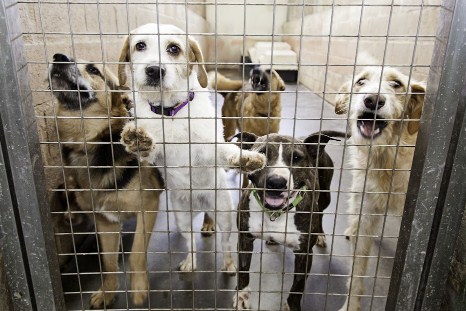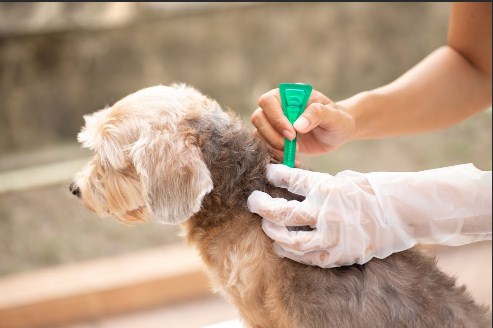Fleas are the most common external parasite found in cats and dogs. Moreover, flea infestations are a common challenge faced by animal shelters. They can significantly impact the well-being of the animals under their care.
Fleas are more than just a nuisance. They can cause various animal health issues, including skin irritation, allergic reactions, anemia, and even the transmission of diseases such as tapeworms and Bartonella. An infected animal may be less likely to be adopted, as potential adopters could be deterred by the prospect of dealing with fleas in their homes. Considering these challenges, it is crucial for animal shelters to implement effective flea prevention and treatment strategies.
This article will help you recognize the signs of flea infestations, outline various treatment options, and provide guidance on preventing future infestations.
Signs Of A Flea Infestation
Recognizing the signs of a flea infestation is the first step in addressing the problem and ensuring the health and comfort of animals in your shelter. Early detection can help minimize the spread and severity of the infestation. Here are some key indicators to look out for:
- Physical Signs On Animals:
- Scratching, biting, and licking: Animals infested with fleas will often scratch or groom themselves excessively to relieve the itching and discomfort caused by flea bites.
- Red and irritated skin: Flea bites can cause skin irritation, leading to redness, inflammation, and sometimes hair loss in affected areas.
- Flea dirt and eggs: Flea feces, also known as flea dirt, appear as tiny black or brown specks on an animal’s coat. Flea eggs are tiny, white, and oval-shaped, often found alongside flea dirt.
- Environmental Signs:
- Flea sightings in the shelter: Adult fleas may be spotted jumping or crawling on surfaces, particularly in areas where animals spend time resting or sleeping.
- Flea larvae and pupae in bedding and carpets: Flea larvae resemble small, pale worms, while pupae appear as tiny, cocoon-like structures. Both can be found in animal bedding, carpets, and other soft surfaces in the shelter.
Shelter staff and volunteers can quickly identify and address flea infestations by staying vigilant and regularly inspecting animals and their environment. Doing so protects the animals’ health and prevents fleas from spreading in the facility.
Treating Flea Infestations
Treating a flea infestation in an animal shelter requires a comprehensive approach, targeting not only the fleas on the animals but also those in the environment. The following steps can help effectively manage and eliminate flea infestations:
- Topical Flea Treatments
Spot-on treatments are easy-to-apply liquid medications typically placed on the animal’s skin between its shoulder blades or at the base of its neck. They work by killing adult fleas and disrupting their life cycle. You can also use flea specially-formulated shampoos and sprays to kill fleas on contact. It’s best to follow the manufacturer’s instructions and use products specifically designed for the species and age of the treated animals.
- Oral Flea Medications
Oral medications can be given to animals to kill adult fleas and prevent future infestations. These may come in tablets, pills, or soft chew form. Consult your veterinarian to determine the appropriate medication and dosage for your shelter’s animals.
- Environmental Treatments
Thoroughly clean and vacuum all areas of the shelter, paying special attention to bedding, carpets, and upholstery. This helps remove flea eggs, larvae, and pupae from the environment. You can launder all bedding, towels, and other soft materials in hot water and dry them on the highest heat to kill any remaining fleas and their eggs.
Apply an approved insect growth regulator (IGR) or insecticide to the shelter’s environment, following the manufacturer’s instructions. This can help control flea populations and prevent re-infestation.
- Professional Exterminators
For severe infestations or situations where self-treatment has been unsuccessful, consider hiring a professional pest control service to eliminate fleas from the shelter effectively and safely. Combining these treatments and diligently following through on each step can effectively manage and eliminate flea infestations in animal shelters.
Preventing Future Infestations
It’s ideal to prevent flea infestations to maintain a healthy and comfortable environment in your animal shelter. Below are tips to achieve this:
- Regular flea treatments for animals should be a priority, including monthly preventative medications or flea collars, as your veterinarian recommends.
- Check all incoming animals for fleas upon arrival and treat them accordingly before integrating them with the shelter population to reduce the risk of infestations.
- A clean environment plays a significant role in flea prevention. Hence, it’s best to frequently clean and vacuum to keep flea populations in check, especially in areas where animals rest and sleep.
- Educate your staff and volunteers on proper flea prevention techniques and encourage them to promptly recognize and report signs of infestations.
- Work with a professional pest control service to conduct regular inspections and treatments.
Taking these preventive measures guarantees that your shelter remains a flea-free and welcoming space for animals and potential adopters.
Conclusion
Recognizing the signs of flea infestations, implementing effective treatment strategies, and taking proactive measures to prevent future infestations allows shelters to create a clean and comfortable environment for both animals and potential adopters. In doing so, animal shelters contribute to their mission’s success, promote responsible pet ownership, and foster happy, healthy relationships between pets and their new families.


